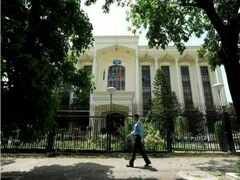Beirut blast among top 10 most powerful non-nuclear explosions in history: Study
Researchers of a UK university claim that the Beirut port blast was one of the largest non-nuclear explosion ever recorded.
As per the research of the Sheffield University’s Civil and Structural Engineering department, the devastating explosion yield was equivalent of between 500 and 1,100 tons of TNT.
The blast which destroyed Lebanese capital and killed more than 190 people on August 4, was one-twentieth the strength of the atomic bomb dropped on Hiroshima in 1945, which was in the rang eof 13-15 kilotons of TNT equivalent, said the report.
The study was published in the journal Shock Waves. It used videos and images from social media to determine the shockwave of the explosion.
Talking to BBC, Dr. San Rigby from the research group said, “The Beirut explosion is interesting because it sits almost directly in a sort of no-man’s land between the largest conventional weapons and nuclear weapons.”
He said, “It was about 10 times bigger than the biggest conventional weapon, and 10 to 20 times smaller than the early nuclear weapons.”
The study finds that the port explosion was in the top 10 in terms of most powerful accidental man-made explosion in history.
The largest accidental non-nuclear explosion in history occurred in Halifax, Nova Scotia, in 1917, when two ships (one carrying explosives) collided. That was nearly 3 kilotons of TNT equivalent, so again Beirut was around a third this size, give or take. More recently, the 2015 explosion in Tianjin (China) was only around half the yield of Beirut. This again involved ammonium nitrate.
Rigby added: “Beirut’s certainly the most powerful non-nuclear explosion of the 21st century.”
The group hopes its findings can assist emergency planners deal better with similar disasters in the future.
The blast also injured more than 6,500 people.
According to the study, the explosion released the equivalent of around 1GWh of energy in milliseconds, which is equal to the hourly energy generated by three million solar panels or 400 wind turbines — enough to power 100 homes for a year.

























Comments
Comments are closed.